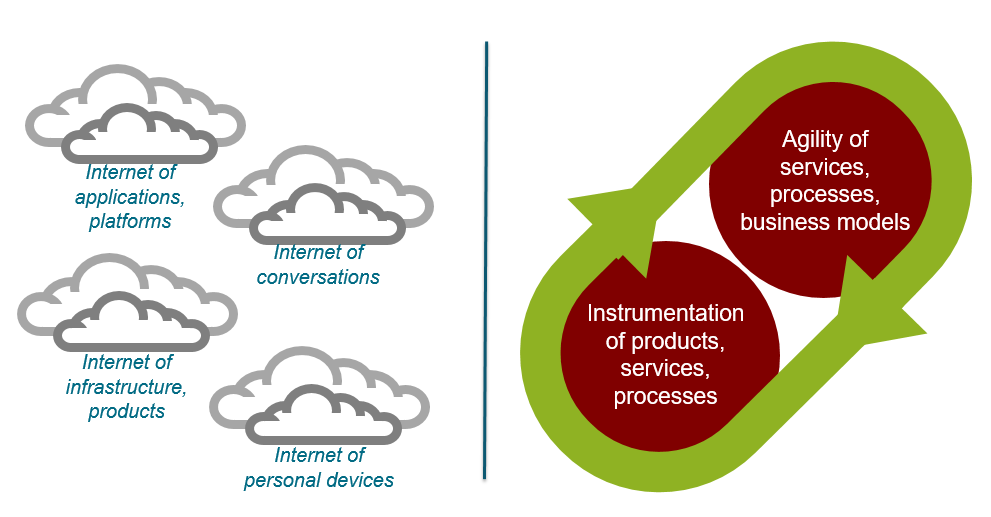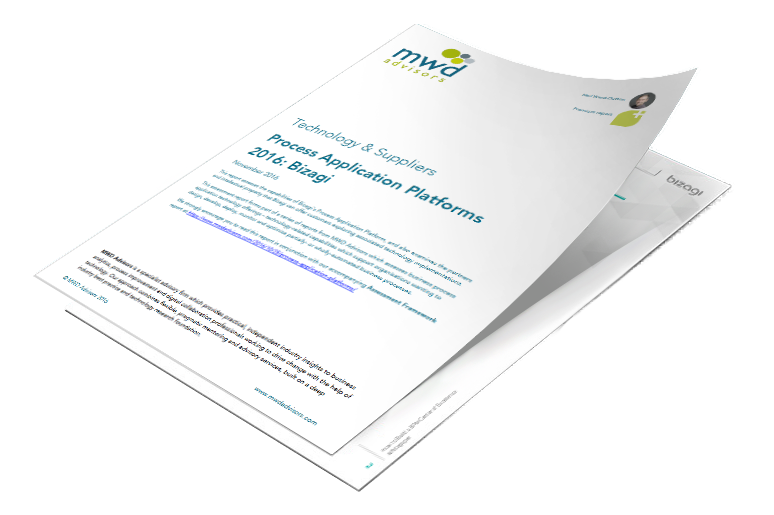7 Essential Questions About Digital Transformation in the Enterprise
Blog: Bizagi Blog
Are you stuck trying to deliver digital transformation?
Every business and technology leader that we work with is fighting to learn about successful strategies for digital transformation. These insights are vital for today’s companies to be able to survive and thrive in the digital economy.
So following a popular webinar ‘Delivering Meaningful Results from Digital Transformation’ featuring with Neil Ward-Dutton of MWD Advisors, he shared his analyst expertise with our community by answering some of the most common and important questions about digital transformation.
1 – What does digital transformation really mean for today’s business leaders?
There are actually two parts to the concept of digital transformation. The first is about reorienting your organization to make strategic use of digital technologies like cloud platforms, mobile apps, social networks, connected infrastructure and products and so on.
The second is about using digital technologies to change the nature of business change itself. You can think of these two parts as “transforming to digital” and “transforming digitally”. One is about digital technology usage as a destination; the other is about actually changing how you take that journey.
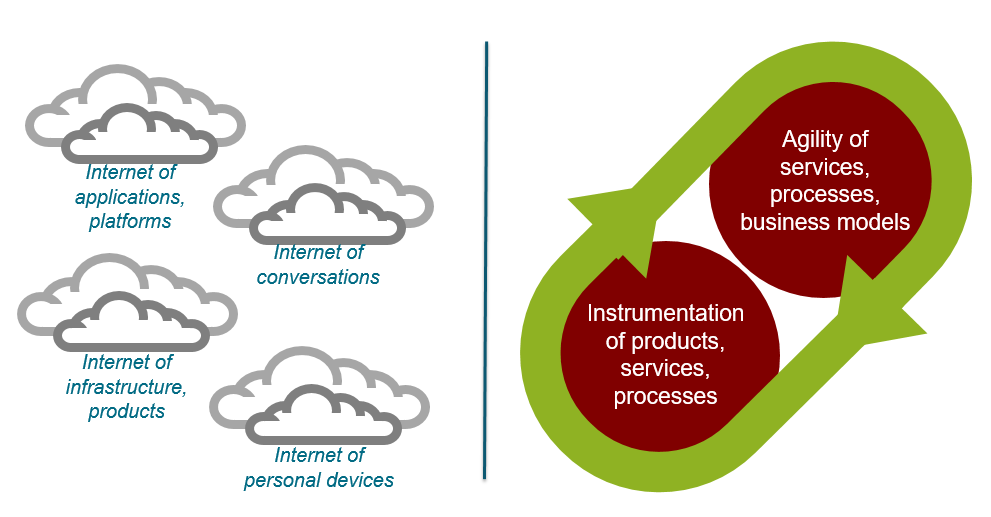
Where a great many organizations focus only on the first part, we find that the most advanced organizations are working on both pieces – and reaping big rewards.
2 – Where should businesses start with digital transformation?
Every business needs to start in a place that reflects its own business priorities. Digital technologies’ economic value is all about their ability to coordinate resources more efficiently.
For many organizations, their first priority is to use digital technologies to better connect internal resources (product and service knowledge, customer knowledge, and so on) to customers across and between various digital and physical channels – to create more compelling customer experiences.
For others we work with, the focus is more around coordinating internal operations better with digital technologies – for example using mobile apps to enable dispersed field workforces to be better informed about work priorities, and to share their knowledge more effectively.
In fact, we find four common areas of focus – with different executives typically championing one over the others, as you can see in this diagram below:
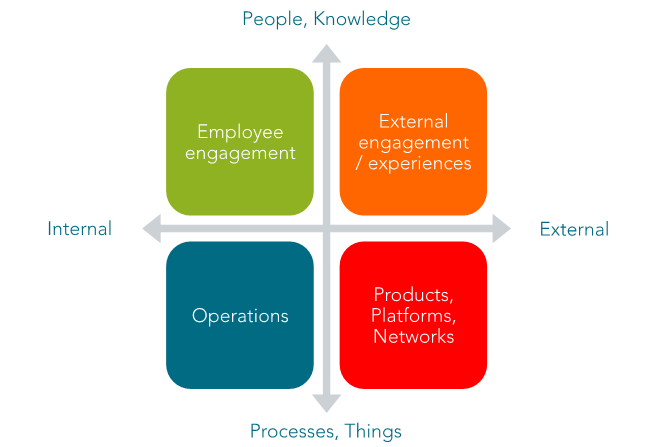
From a technology leader’s point of view, the most important thing about this picture is that true digital transformation only works if you can connect all these focus areas together – and that’s where an established IT function really adds value.
3 – What are the barriers that usually block the path to transformation?
The biggest impediment to success here that we see is just a lack of joined-up thinking. It’s not a “people problem” as such, or a process problem; it’s a problem with a lack of an up-to-date strategic view of how technology should add value to the business, and who is going to be responsible for making progress against that.
4 – What is the culture needed for digital transformation?
Organizations that succeed in driving real change with digital technologies tend to be those where senior leaders are outward-facing – in terms of looking at what their customers and their market really want, as well as taking the time to look outside their immediate space to see how other organizations are adapting to new technologies.
They’re also organizations that put real effort into gathering innovation and improvement ideas from employees, customers and other stakeholders and putting systems in place to take effective action based on those.
So in short, it’s about openness to new ideas – from wherever they may come.
5 – What is a digital business platform?
The key requirements for a digital business platform spring directly from the ways that digital transformation initiatives are playing out today. As I mentioned already, two of the key pieces here are about bridging multiple perspectives and initiatives that are using digital technologies to coordinate resources more effectively; and also about using digital technologies to change the nature of business change itself.
Organizations serious about digital transformations need to invest in platforms that help them do both these things – create bridges between different initiatives and focus areas, and provide facilities that help them change more quickly, with more confidence.
To dive down a level, we see three core capabilities as mandatory. First is the ability to create applications for sharing knowledge and coordinating work, at scale, across teams, departments and business entities.
Second is the ability to use model-driven tools when specifying these applications, enabling different stakeholders (some less technical than others) to collaborate to create and change applications quickly.
Third is all about instrumentation – a platform that brings you insights about how digital products, services, experiences and business processes are performing, and surfacing those insights in a way that enables teams to drive targeted improvements and changes quickly, and with confidence.
6 – Why would an organization need a digital business platform?
Organizations need digital platforms principally because they provide capabilities that would be too expensive and time-consuming to build and maintain internally. The three core capabilities of digital business platforms each require a lot of engineering to get right!
7 – Why would someone choose Bizagi over other platforms?
Platforms like Bizagi’s are particularly important where speed to market and ongoing work agility are premium concerns. There are three parts to Bizagi’s proposition: agile (enabling clients to build and change applications quickly), engaging (providing more appropriate application user experiences for different kinds of worker) and connected making it easy to integrate with external systems and data sources).
Together with a new cloud-based deployment option, Bizagi’s freemium model, open APIs and flexible user experience options all support this position well.
Bizagi’s new Experience Designer extends the value of the platform’s already strong support for model-driven organization and information management, and showcases the flexibility of what’s possible in support of exploratory work patterns (rather than heads-down task work).
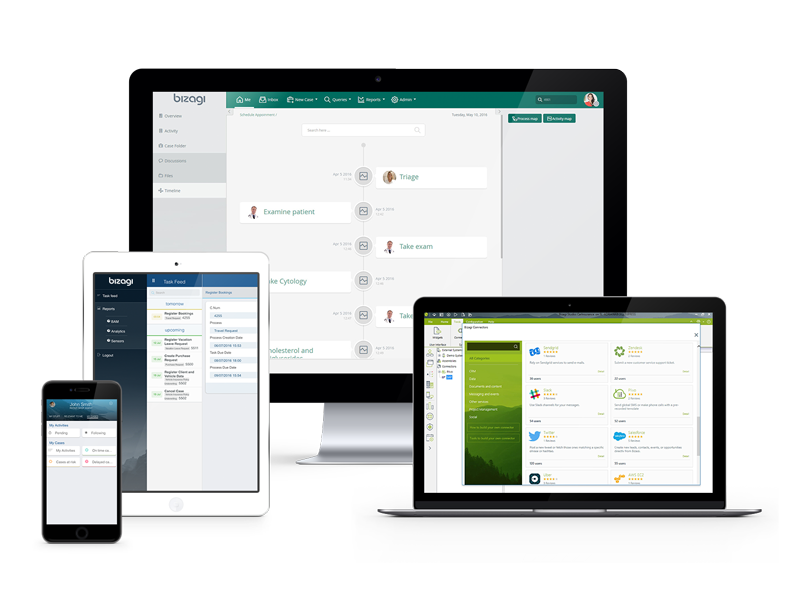
Do you want to learn more about the use cases and capabilities of Bizagi?Download your complimentary copy of Neil’s in-depth analysis of Bizagi, ‘Process Appliation Platforms: Bizagi’.

About Neil Ward-Dutton
MWD Advisors’ research is focused on how digital technologies are changing the ways that organizations and people get work done. Neil is MWD Advisors’ co-founder and Research Director, and he is one of Europe’s most experienced and high-profile strategic IT advisors and industry analysts. Neil is a technology expert and he is genuinely passionate about helping organizations get real business benefits from the investments they make in IT.
The post 7 Essential Questions About Digital Transformation in the Enterprise appeared first on Bizagi Blog – Ideas for Delivering Digital Transformation.
Leave a Comment
You must be logged in to post a comment.
